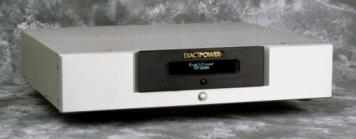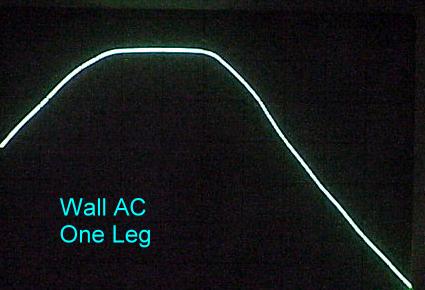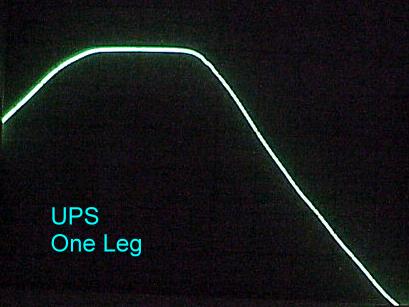|
|||||||||||||||||
|
Introduction All those miles and miles of AC power lines make excellent antennae too, and there are plenty of radio frequency sources sending RF our way. An audio amplifier processes all frequencies passing through it, not just the audible frequencies. RF - let's call it 100 kHz and above - can "beat" with the audible band frequencies, cause oscillations that we can't hear, but decrease the amplifier's performance. So, what can we do about it? Over the past few decades, a number of products have arisen for consumers use, to form a category we call "Power Conditioners". Up until recently, they consisted of various arrays of filters, including coils (inductors, chokes), graphite, and capacitors. Usually, some sort of surge protection (fuses, MOVs) is thrown in. Do they work? Well, they do, sort of. Since they are filters, and filters are not perfect, you end up with reduction (attenuation) of the noise, but not complete elimination. However, second and third harmonics of 60 Hz, that is, 120 Hz and 180 Hz, are so close to the fundamental (60 Hz), their removal is all but impossible. Finally, a solution . . . . In the past couple of years, a new breed of power conditioner has arisen. Rather than filter out the noise and harmonics, they restore the original 60 Hz waveform. PS Audio's P300, P600, and P1200 are legendary in this regard. In fact, we use the P1200 here. They are basically audio amplifiers that take the incoming AC, convert it to DC in the power supply, and then output it as 60 Hz, 120 Volts AC (your receiver amplifier outputs sound at all frequencies and about 30 volts AC). They work beautifully, but are inefficient, since they are audio amplifiers. So, if you want 1,200 watts output, you need about 2,000 watts coming from the wall sockets. The ExactPower approach . . . . The EP15 reconstructs the AC waveform too, but uses a completely different procedure. Instead of converting the AC to DC and back again to AC, the ExactPower looks at the AC waveform, and having a picture of the ideal sine wave in its memory, it removes peaks and also fills in the gaps, in a real time fashion. Also, the EP15 is a voltage regulator, and since our big home theater systems can require big time power during critical movie passages, this is an important feature, because a lowered voltage can make that deep bass sound wimpy. At $1,799, the EP15 is not really very expensive for what it does, when you take into account previous power conditioner designs that cost that much, but just filter out some of the noise, and do not regulate the voltage. It is a very attractive unit too, with a green LED readout panel on the front that lets you see what the voltage is, along with how many watts you are using. The rear panel sports a large number of AC sockets. There are eight high grade sockets to be exact, along with a grounded AC socket for detachable power cords. It is a 15 amp unit, which means you don't need one of those weird AC wall receptacles that would be required by code if it were a 20 amp unit.
The Tests The first thing I did was put the EP15 on an oscilloscope and look at the AC waveform. First of all, my wall AC:
If my AC were perfect, this would be a sine wave. But, this is no sine wave. See how the top of the waveform is flat? That indicates the presence of harmonics. And this is with a power strip that we all use in our homes for increasing the number of sockets. My AC looks like this no matter what I put into the circuit (except for the PS Audio and ExactPower, which you are about to see). Here is one with a UPS and several power strips:
Pretty much the same. OK, now here is what it looks like, coming through all those power strips and whatnot, but the final item in the path being the ExactPower EP15:
Whoa! Adios noise, harmonics, and hello sine wave. The EP15 and PS Audio products are the ONLY ones we have tested that can do this. The sonic benefits of reduced noise in the power translate to the same thing in the audio circuits. Less noise. Audio amplifier power supplies convert AC to DC before sending it to the music. Those power supplies are not perfect. Any noise in the incoming AC will get through to the music, even in just tiny amounts. So, the less noise in the AC supply, the less noise that the amplifier has to deal with. Simple as that. One thing that the EP15 does not do, is supply balanced power. If your incoming AC is unbalanced, which it is for North American 120 Volts, 60 Hz, the EP15 output is unbalanced too. Now, we at Secrets believe strongly in the benefits of balanced AC. Because of common mode rejection, any noise that gets into the AC power cords after a balanced AC is supplied to the sound system, will be eliminated. Since power cords are antennae, this is a good thing. So, how do we balance the EP15? There are a number of balanced transformers out there that you can simply connect to the output of the EP15. Many are expensive, but there are some that come at reasonable cost. The BPT (www.b-p-t.com) represents a best-buy kind of value, and we have used them. They are a no-frills version of transformers costing much more. So, total cost of the EP15 and a balanced transformer will be about $2,500. The package will be very efficient, not get hot, and can fit in reasonable spaces. The Sound We have discussed the sonic benefits of clean AC many times. It is especially evident with mass market receivers. Less harshness is the most obvious thing. I suspect that is the result of high frequency noise being reduced. The benefits of eliminating the AC harmonics will be less hum. The EP15's 15 amp rating let us crank our entire system, with three Velodyne HGS-18s in the circuit, to full output with no problems at all. The voltage regulation allows a deeper bass too, since low frequencies require more power, and a sagging AC wall socket robs the bass of deep impact. What happens is that the EP15's own power supply delivers the extra current into the circuit, along with the wall's current, when the demand is there. Then, the EP15 replenishes its power supply during the aftermath of all those explosions. Conclusion The ExactPower EP15 is a winner, big time. It gives you the 60 Hz sine waves that you are paying for but not getting from the power company, keeps it at 120 volts no matter what your subwoofers are demanding, and all at the price we were paying for fancy filters in the past. Add a balanced transformer, and you have clean, pure, balanced power. You can't ask for more. Highly recommended. - John E. Johnson, Jr. -
|
|||||||||||||||||








